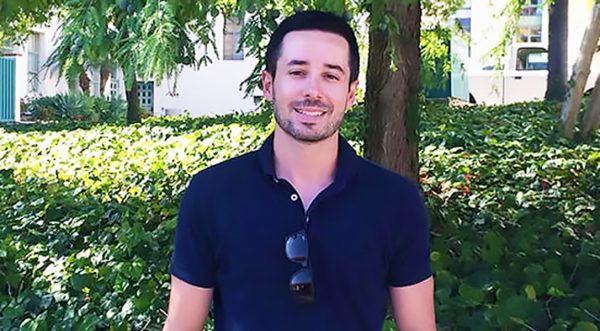Promoting Health for Sexual Minority Men
By Michael Price
“We’re hoping that if we are successful, this is a model that can be utilized across the country.”
“Aaron Blashill is shining a spotlight on often overlooked health issues among sexual minority men. The San Diego State University psychologist recently received two separate grants from the National Institutes of Health (NIH) to examine HIV prevention strategies and body image disorders prevalent among sexual minority men.
The first project—a five-year, $3.2 million grant—will allow Blashill and his colleagues to assess eating disorder prevention programs for young sexual minority men. In the public’s mind, eating disorders are generally associated with young women, he said, but it’s a glaring issue in other communities as well.
“One of the highest prevalence of eating disorders of any group is in sexual minority men,” Blashill said, pointing out that 8.8 percent of these men will have an eating disorder at some point in their lifetimes. “It’s a huge blind spot.”
Despite that prevalence, there are no solid, evidence-based interventions aimed at preventing eating disorders in this group. With funding from the NIH grant, Blashill will rigorously test one particular intervention in which men attend two hour-long sessions over two weeks in small groups. In these groups, a clinically trained peer leader will lead discussions of body image issues unique to gay men and teach them to critique the media messages and social norms that can inspire negative body image.
“We’re trying to get across the message that there are other ways to be in your skin besides what the media presents,” Blashill said.
His other new project—funded by a three-year, $1 million grant—will focus on the factors that influence whether Hispanic sexual minority men take the HIV-preventative medication known as PrEP (pre-exposure prophylaxis). Despite its proven record of success at preventing men from contracting HIV, it’s not widely used in the Hispanic sexual minority community.
“If folks take PrEP regularly, there’s basically zero chance of contracting HIV,” Blashill said. “We have this amazing tool, but unfortunately there’s very low uptake, even though this community is one of the most at-risk groups for HIV.”
With the NIH funding, Blashill and his team will pilot a bilingual intervention program aimed at reducing the barriers to receiving and regularly taking PrEP. Those barriers include lack of awareness of the drug, lack of health insurance, difficulty scheduling or attending physician consultations, and regular blood testing.
“We’re hoping that if we are successful, this is a model that can be utilized across the country.”


